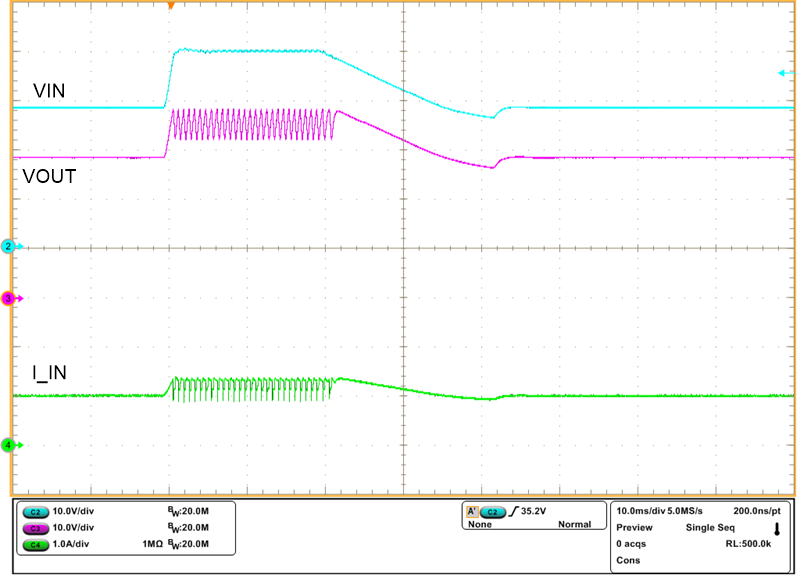SLVUBX9 October 2020 TPS2640
4.4.5.1 Overvoltage Clamp Response
Follow the instructions to verify the Overvoltage clamp response of the device:
Set J7 in 1-2 position
Set the power supply to 28 V and load of 1 A at the output.
Now apply transient input voltage (28 V to 40 V) for 20 ms and verify the Overvoltage clamp response as Figure 4-9 shows.
 Figure 4-9 Overvoltage Clamp Response.
Figure 4-9 Overvoltage Clamp Response.